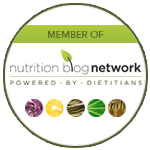Gender and Racial Diversity in Registered Dietitian Nutritionists
Edit: Updated statistics are available at a new link on the CDR website: Current demographics show 98,053 dietitians, 90.6% female, 3.8% male, 5.6% not reported, 77.8% white as of July 3, 2017. Here’s a list of other credentials issued by the CDR and respective demographics. The rest of the article will be based on the


